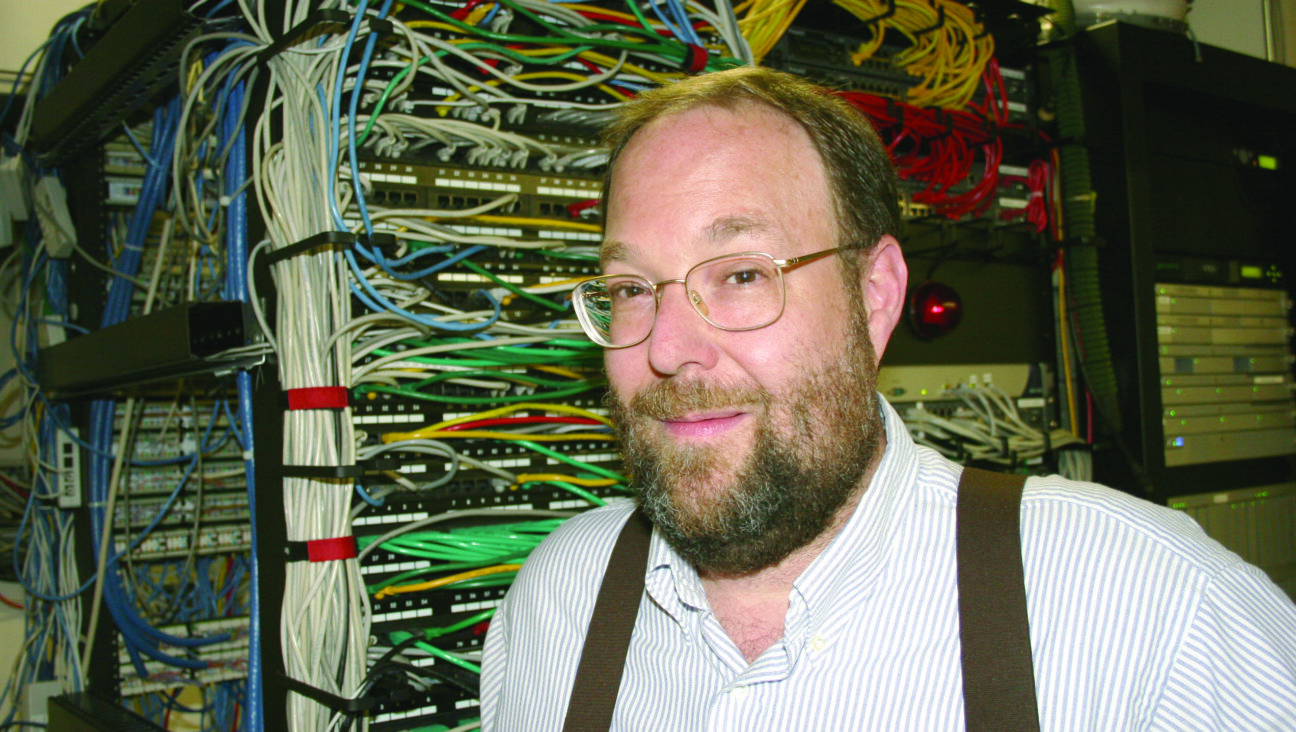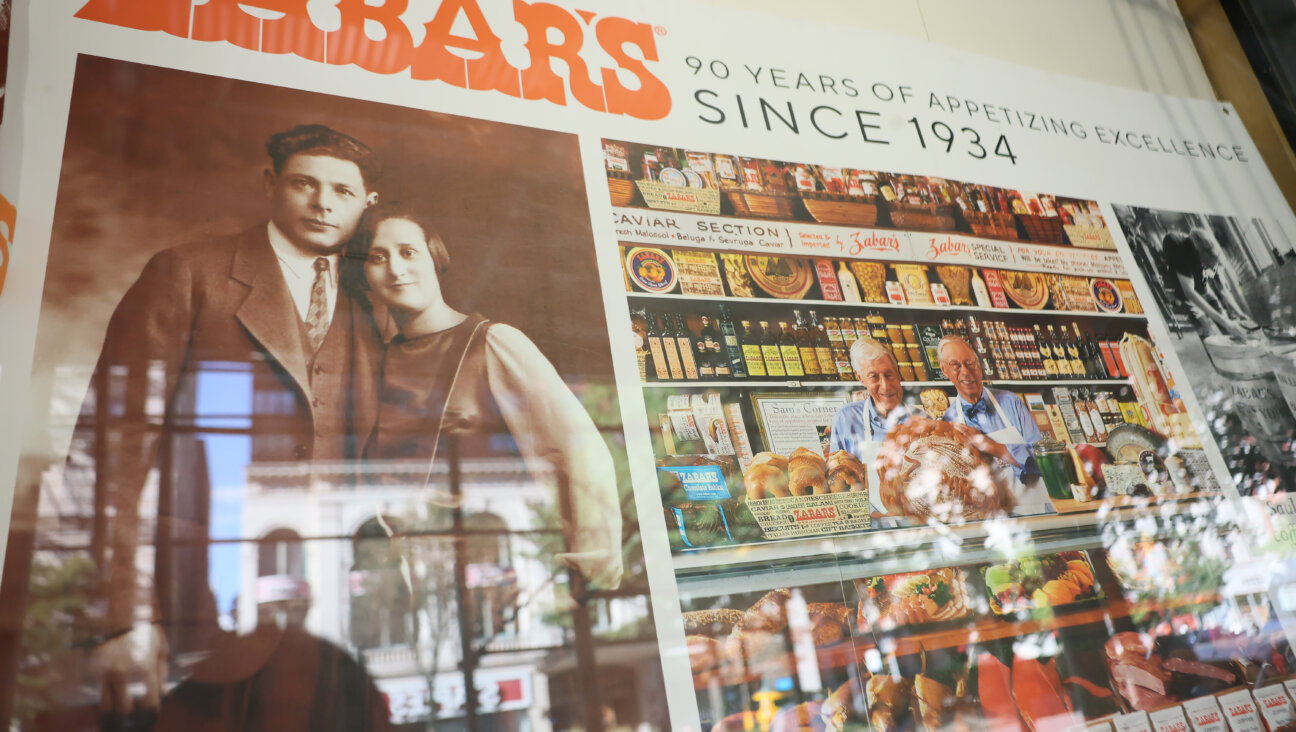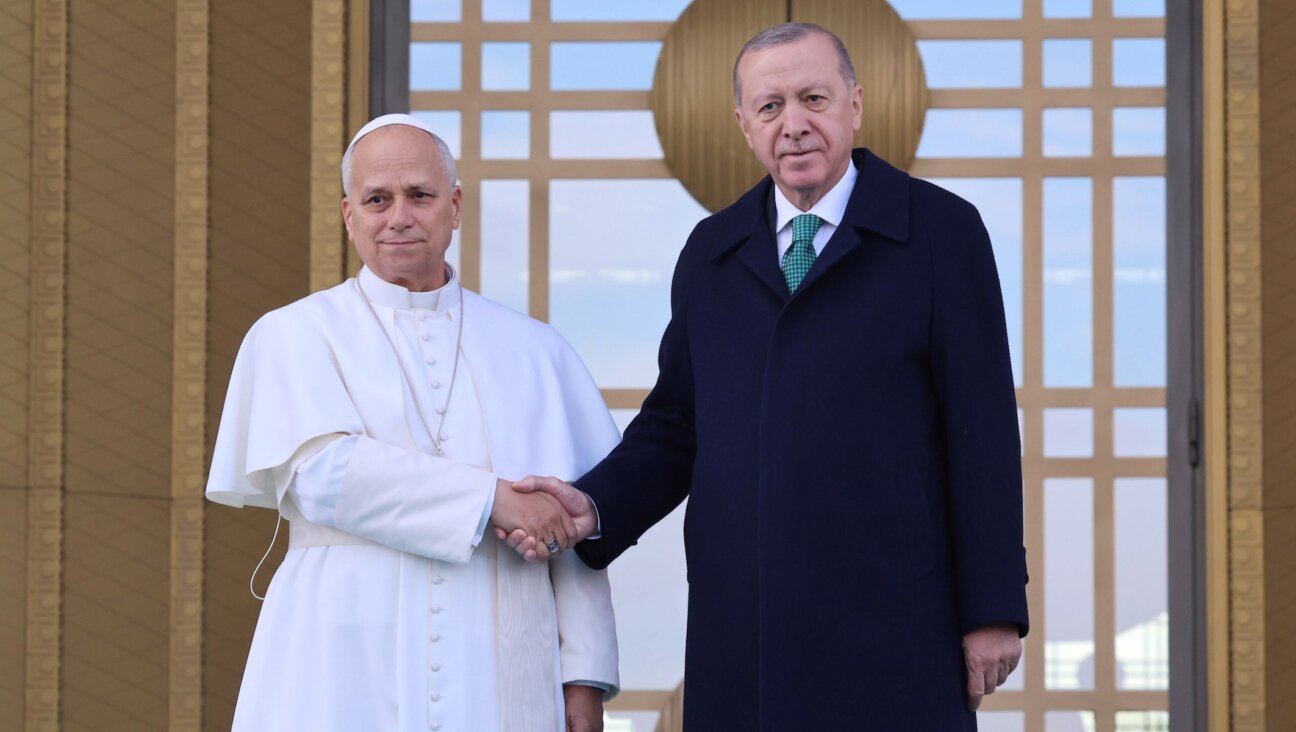Making Sense of the Holiday Season’s Onslaught of New Haggadahs

A Passover Offering: The Bronfman Haggadah is the brainchild of prominent philanthropist Edgar Bronfman and his wife, artist Jan Aronson. Image by Courtesy of Bronfman Associates
● The Bronfman Haggadah
By Edgar Bronfman
Illustrated by Jan Aronson
Rizzoli, 128 pages, $29.95
● The Artist’s Haggadah
By Jane Kessler Petitjean
Self-published, 48 pages, $20
● The Haggadah App
David Kraemer, et al
Melcher Media, $4.99 on iTunes
● Hakol Baseder
By Mitch Heifetz and Michael Toben
Gefen Books, 110 pages, $7.95 (Haggadah), $39.95 (booklet, CD, and interactive packet)
● More Than Four Questions
By Sharon Marson,
Ben Yehuda Press, 140 pages, $12.95
● Sharing the Journey: The Haggadah for the Contemporary Family
By Alan Yoffie
Illustrated by Mark Podwal
CCAR, 120 pages, $18
America is changing, as the last election made quite clear. We are more diverse, more wired and more demanding of interactive experiences, whether it’s Tweeting back to Nicki Minaj or talking back to the president on Facebook. And indeed, this year’s crop of Haggadot (including a couple that came out too late for last year’s review) reflects those changes in the prism of Jewish experience.
The most traditional of this year’s new entries would at first seem to be The Bronfman Haggadah, written by Edgar Bronfman and illustrated by his wife, Jan Aronson. At first glance, it’s old school: a big, handsome volume, with prescriptive, celebrant/unison/leader instructions.
And yet, under the hood, so to speak, The Bronfman Haggadah is a sign of the times. Its text is wildly idiosyncratic, completely in English and out of the traditional order (which is what the word “seder” means). Its theology is daring, and, may I say, nondual: It refers to God as an “energy” that animates all life. As the unique product of the two creators’ imaginations, it is the ultimate in DIY Judaism, if Y happens to be a billionaire who can have books published by Rizzoli.
Really, if you take away the high production values, The Bronfman Haggadah is not dissimilar to The Todd Haggadah, The David Haggadah and the various quirky, self-executed projects my friends have made for years. I’m not sure that it is useful for ordinary family Seders, given its many quirks, but then again, neither are most DIY projects; they’re meant to be personal, customized, engaged. They’re My Haggadah, not Ours.
Indeed, among the other Haggadot this year, its closest relative is not a big-ticket entry but rather Jane Kessler Petitjean’s The Artist’s Haggadah, which is, like Bronfman’s, a nontraditional, personal and lavishly illustrated volume that reflects one person’s vision. As such, The Bronfman Haggadah is new-school iSpirituality in old-school clothing — in this case, a bespoke suit. It’s of a piece with Bronfman’s and his fellow mega-donors’ brand of donor-driven philanthropy; this Haggadah is not a federation or community project, but the personal vision of someone with the means to execute it. Like Petitjean’s, it’s worth a look for its own sake, but even more for inspiration on how you, too, can create your own Seder ritual — though perhaps printed out from haggadot.com rather than by an art press.
The generation of iSpirituality is also wired — and plugged into an interactive Web 2.0 universe in which “Choose Your Own Adventure” is the norm. Enter The Haggadah App, released last year (but, perhaps like the Exodus itself, a little late) by Melcher Media, with contributions by David Kraemer, Irwin Kula, Amichai Lau-Lavie and others. The Haggadah App is exactly what you’d expect it to be — except better. It contains the traditional Haggadah, plenty of how-to’s, an alternative “Sayder” by Lau-Lavie, kids’ games (my first experience coloring on an iPad) and more.
But when you look closely, what makes this app different is the quality: beautiful, clear design (the polar opposite of the ongepatshkete New American Haggadah, which I and many other critics trashed last year but which has nonetheless achieved some kind of canonical status); full text, translation and transliteration (you can switch from Hebrew to English at the touch of a button); just the right amount of historical decoration; just the right amount of commentary and guidance — really, they got everything just right.
Obviously, the fact that the Haggadah App is, well, an app puts it beyond the reach of those who don’t use electricity on the holiday. But for everyone else, it showcases the potential that technology has not just to enable the transmission of existing content, but also to make the content more accessible, more variable and more customizable. And the $4.99 price point is reasonable, as well. There are 100 more details that I’d like to dwell on here, but I don’t want to fawn. The Haggadah App didn’t just impress me, it also made me fall in love with the iPad again.
The utility of such technology becomes glaringly apparent when you contrast the Haggadah App with the “experimental Haggadah” put out by Jewish National Fund and B’nai Akiva, titled Hakol Baseder. This ensemble package comes complete with activity book, CD-ROM, bilingual text and a bewildering array of directions and options — not to mention an endorsement from British Chief Rabbi Jonathan Sacks. Here, too, the title is instructive; this Haggadah kit really does try to put everything (hakol) into the Seder (baseder) and is the latest in a long line of multi-activity, multi-part Seder kits like the old chestnuts (in this column, anyway) Noam Zion and David Dishon’s A Different Night, Zion’s A Night To Remember, David Arnow’s Creating Lively Passover Seders and My People’s Passover Haggadah, edited by Lawrence Hoffman and David Arnow.
But the title Hakol Baseder, a pun in Hebrew that is unintelligible in English (and looks like a misprint to nonfluent Hebrew speakers), also indicates the limitations of this cluttered behemoth. If your family is Orthodox or close to it, highly educated (ready for games about Bityah and Puah?) and either fluent in Hebrew or not distracted by a Hebrew-heavy text, then Hakol Baseder may be for you. Now, I happen to know several such families, and they are going to love this Haggadah. (They also can overlook aspects of the text others may find offensive — by which I mean not just male Four Sons language and the like, but some nasty fundamentalist asides, like lumping anyone interested in yoga under the “Wicked Son.”) For most, though, this one will probably be overwhelming. It’s just too much stuff, too many bells and whistles, too much distraction. After reading through 30-odd pages of introductions and instructions, I felt like a cook on the first night of Passover: exhausted before the Seder even begins.
At the other extreme is the clean, accessible and progressive More Than Four Questions by Sharon Marson. Wittgenstein once imagined a religion comprising nothing but jokes. Well, More Than Four Questions is a Haggadah (or Haggadah supplement) comprising only questions. More Than Four Questions is an ingeniously contrived book with 50-odd pages of questions for children and adults, blank spaces for kids and grownups to write their answers and, on the reverse side of each page, actual answers by actual kids, as well as reflections from classical and contemporary sources. More Than Four Questions met an unwritten standard of mine: I gave it to my sister for use at the “kids’ Seder” with my nephew and his friends. It’s a useful companion to the Seder, and the adults’ reflections are, like the in-jokes on “Sesame Street,” enough to keep your own mind churning while you fulfill the Seder’s injunction to teach the story to your children.
More Than Four Questions is like Hakol Baseder in one respect, though: it, too, would have benefited from technology. There’s no real reason for this volume to be a book rather than, say, an iPad app or a PDF you can print out yourself. The printed-on-trees format feels a little wasteful. Still, this simple Haggadah companion is the clearest of the bunch when it comes to the real points of the Seder, such as conversation, introspection, education and a lot of questions. And although it’s meant to be a supplement and not a replacement, if I had to choose between it and a rote, by-the-book option, I’d pick More Than Four Questions in a heartbeat.
Of course, not everyone has joined the 21st century, with its apps and tweets. And who better than a major American movement (in this case, the Reform one) to meet the past century’s Jewish needs? Enter Sharing the Journey, a perfectly lovely, standard Reform Haggadah, with reader/response notes, Holocaust liturgy and everything else the iSpirituality crowd thought it left behind. I don’t mean to be harsh here — Sharing the Journey really is quite nice: attractive art, accessible translation and commentary, and concise, too. I just wonder who practices Judaism this way anymore.
There are many who worry about what this new world disorder portends for the future of the Jewish people. How do you “teach your children” when what you’re teaching is just one idiosyncratic option among myriads? These are valid concerns, but this crop of Haggadot provides a set of counterexamples: ways of teaching that are authentic, connected, plugged in, turned on and personal in nature. They are different from one another, but so is the Seder night, and so are we.
Jay Michaelson is a contributing editor of the Forward.
















